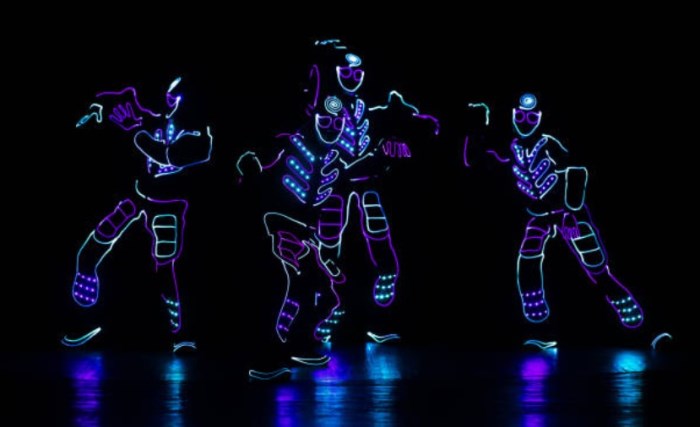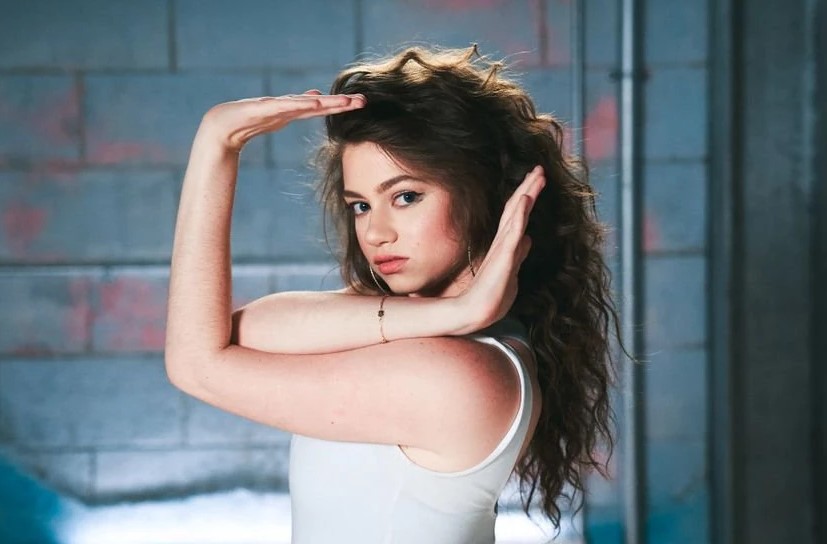Even people who aren’t the slightest bit interested in dancing can probably recognize the robot dance. This simple but super catchy dance has been performed and imitated everywhere around the world for decades.
People still do it in TikTok videos and YouTube shorts. There’s no shortage of movies and music videos with the robot dance in them, too!
But have you ever wondered who first came up with this dance and what its origin was like?
Well, wonder no more because that’s what we’ll be exploring today: the history and evolution of the robot dance!
Table of Contents
What Is Robot Dance
The robot dance is exactly what it said on the tin: the dancer will imitate the janky movement of a robot from those old 80s movies.
Each movement must be stiff and jerky, focusing on sharp and angular motions.
Typically, dancers will punctuate their movements with dimestop (a very abrupt stop in their motions) to create the impression of actuating motors.
While the description may sound pretty complex, the robot dance is very easy. Even people who don’t know how to dance can do a pretty decent version in just a few minutes of practicing.
The keyword here is “decent.” Pro-level dancers, with years of experience and hours spent practicing the motion, can perform the dance a whole lot better with “snappier” movements.
Robot Dance Origin & History
Although the robot dance has been quite popular all throughout the ages, it was most popular during the 60s and 70s.
No one knows exactly when the robot dance came to the scene, but most records showed that it’d been around since as far back as the 1920s as a form of miming.
In the 60s and 70s, coinciding with the rise of pop and funk music, the robot dance enjoyed great use among musicians, bands, and dancers alike.
Many music videos, movies, and dance competitions will feature this peculiar move during this period.
Besides mainstream cinema and music, the robot dance also saw wide usage by street theaters (free performances by a theater group in public places.)
Theaters often featured mimes who would imitate a mechanical man’s or puppet’s movements without musical accompaniment.
But that was eventually changed by the couple Charles “Robot” Washington and his partner “Robot Ann,” who was credited with being the first to dance the robot to music accompaniment at parties and clubs.
Thanks to this, the robot dance now became a move that’s regularly busted out at parties everywhere to strong electronic music (reactions to the dance may vary.)
The robot dance has since evolved and combined with other illusion styles to form the popping style we know today, also commonly called “Robotics.”
Check more: Roger Rabbit Dance
Robot Dance Moves: How To Dance The Robot Dance
One of the many reasons why the robot dance is so popular is because
The Wave
Start by raising your arm. Then, move it in a wave-like motion down towards your body, bending your elbow and wrist as you go.
The Ticking
Imagine you have a ticking clock inside you. Then, move your arms and legs in a series of jerky, mechanical movements as if they are being controlled by the clock.
The Glide
Shift your weight onto one leg and slide the other foot out to the side, keeping it straight and level with the ground. Move your arms in a robotic, angular motion as you glide.
The Dimestop
This move involves suddenly stopping all movement and holding your body rigid as if you have been switched off.
The Isolation
This move requires you to move one part of your body at a time while keeping the rest of your body still.
For example, you might move your head back and forth while keeping your torso completely still.
This is probably the hardest move you can learn as part of your robotic routine.
There’s really no set routine that you have to adhere to if you want to do the robot. Listen to the music and do your best to improvise based on your knowledge!
Notable Robot Dancers
Over the years, many notable artists have incorporated the robot into their own performances… but few do it better than these names!
Michael Jackson
Considered one of the most influential musicians of the 20th century, Michael Jackson is a name that just about everybody knows.
Born in Garay, Indiana, in 1958, he began his career in music as a member of the Jackson 5, a family band comprising all the brothers in the Jackson household.
In the early 1970s, Michael Jackson began to develop his unique dance style, incorporating elements of various dance genres, including funk, soul, and disco. Within the mix of genres, there’s a small flavor of robotics, too.
In fact, one of the reasons why the robot dance became so popular in the 1970s was because Michael used the dance while performing “Dancing Machine” with his brothers.
His robotic moves were so impressive that they quickly became a trademark of his performances. And he continued incorporating them into his routines throughout his career.
In fact, he’s done it so often that there’s a four-minute compilation of all the times he busted out the move!
Dytto
Courtney Nicole Kelly (also known as “Dytto”) is an American dancer, actor, and media personality.
She’s famous for her dance recordings, the most viral of which was the “Barbie Trap Girl Remix” video posted on her channel in 2014.
Although rather amateurishly produced and edited, the video has now gained over 35 million viewers – her talent was clear for everyone to see all the way back then!
Dytto has gone on to record many more recordings, typically with elements of tutting and the robot (which is why she’s also gained the nicknames of “Robot-Babe” and “Queen Tut”.)
Robot Dance Music
The robot dance is typically done to fast-paced electronic music with a strong beat and repetitive rhythms to play further into the machine and robot theme.
If you want to listen to a classic recording, there’s”Planet Rock” by Afrika Bambaataa & The Soulsonic Force. The song’s electronic beats and robotic vocals perfectly fit this dance style.
Other notable artists and songs in the robot dance music genre include “Clear” by Cybotron, “Numbers” by Kraftwerk, and “Tour De France” by Yellow Magic Orchestra.
Final Words
The robot dance has had a significant impact on popular culture.
From Michael Jackson’s performances that changed the world of entertainment forever, to its appearance in classic movies and music videos, it’s clear that the cultural value of this dance extends way beyond its entertaining spirit as a simple, fun party dance.
And, the robot dance’s super simple to do. You can give it a shot at home.
We assure you, you’ll master the basics in less than an hour if you put your heart into it and put some good tutorials on.
What’s your favorite part about this dance? Ever seen it done in person by a pro? We’d love to hear your thoughts in the comment section!



David Mccallan invented the robot dance in 1967 via a competition on aBBC to programme called get it got it good and his prize was a signed copy of Kenny Lynch’s hit Up On The Roof and he still has letter this day